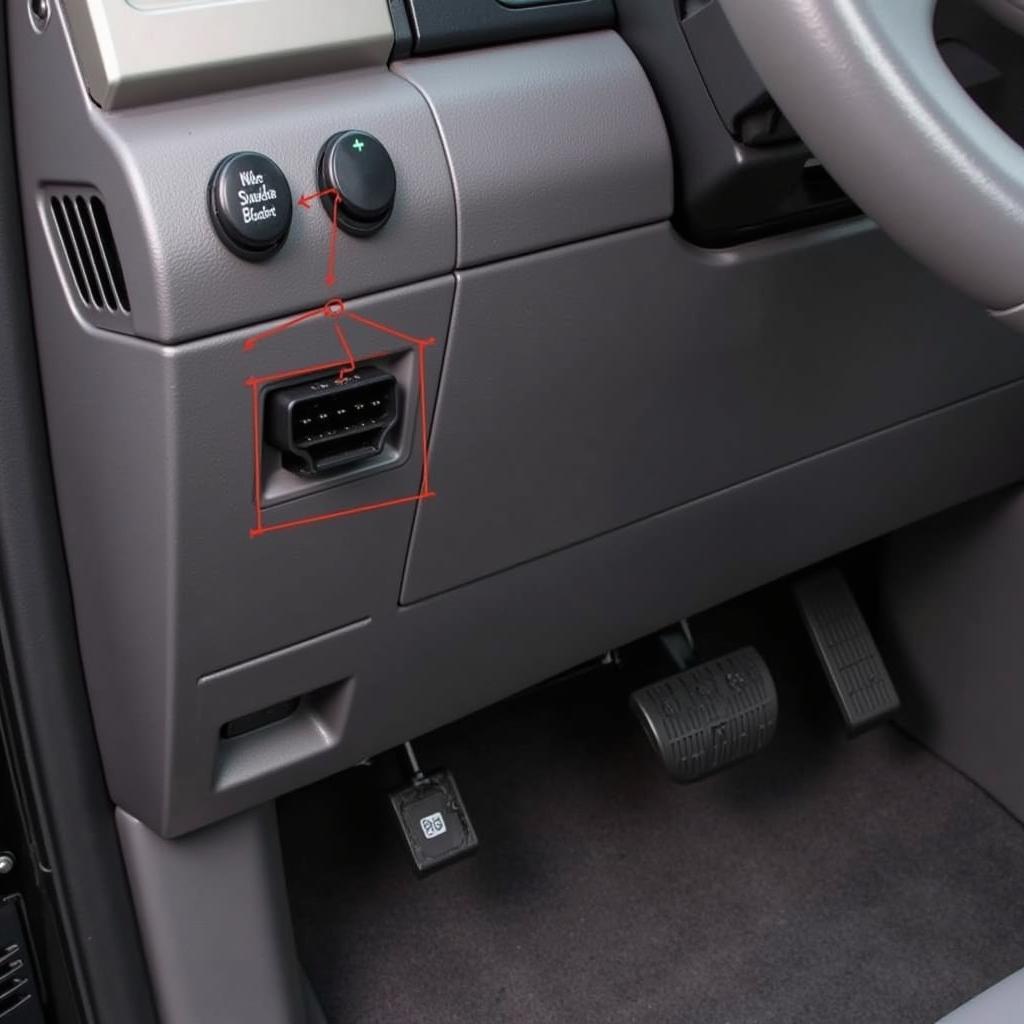Owning a Ford F250 is a source of pride, but even these workhorses can throw a wrench in your plans with an unexpected check engine light. Instead of rushing to a mechanic for every hiccup, an OBD2 scanner for Ford F250 empowers you to diagnose and understand issues yourself.
This guide dives deep into the world of OBD2 scanners specifically designed for the Ford F250, helping you make an informed decision and get back on the road with confidence.
Why You Need an OBD2 Scanner for Your Ford F250
Your truck’s onboard computer system, also known as the Engine Control Unit (ECU), constantly monitors various systems. When it detects an anomaly, it logs a Diagnostic Trouble Code (DTC) and often illuminates the check engine light. An OBD2 scanner acts as the key to unlocking these codes.
Here’s how an OBD2 scanner can benefit you:
- Diagnose Engine Problems: Identify the root cause of engine-related issues, such as misfires, poor fuel economy, or reduced performance.
- Read and Clear Trouble Codes: Decode those cryptic DTCs into plain English, allowing you to pinpoint the problem area. After fixing the issue, clear the codes to reset the check engine light.
- Monitor Live Data: View real-time sensor readings, like engine RPM, coolant temperature, and oxygen sensor data, to analyze your engine’s performance.
- Enhanced Customization: Some scanners offer advanced features like ABS and SRS diagnostics, allowing you to troubleshoot braking and airbag systems.
- Cost Savings: Avoid unnecessary trips to the mechanic for simple diagnoses.
Choosing the Right OBD2 Scanner for Your F250
With a plethora of OBD2 scanners on the market, finding the perfect one for your F250 can seem daunting. Consider these factors to narrow down your search:
1. Compatibility: Ensure the scanner explicitly states its compatibility with Ford vehicles, particularly the F250 model year.
2. Functionality: Determine your needs. Do you require basic code reading and clearing or advanced features like live data streaming and bi-directional control?
3. Budget: OBD2 scanners range from affordable basic models to professional-grade devices. Set a budget that aligns with your requirements and usage frequency.
4. User Friendliness: Opt for a scanner with an intuitive interface, clear display, and easy-to-understand menus.
5. Additional Features: Some scanners offer extras like smartphone connectivity, data logging, and manufacturer-specific code definitions, which can be valuable additions.
“When choosing an OBD2 scanner for your Ford F250, prioritize compatibility and functionality. A scanner that can read and clear Ford-specific codes will be invaluable in diagnosing and resolving issues.” – John Miller, Senior Automotive Technician.
Understanding OBD2 Scanner Types
OBD2 scanners come in various forms, each with its pros and cons:
1. Basic Code Readers: These budget-friendly options excel at reading and clearing DTCs. They lack advanced features but are perfect for DIY enthusiasts tackling basic troubleshooting.
2. Bluetooth Scanners: These compact devices connect wirelessly to your smartphone or tablet, allowing you to view data and utilize diagnostic apps. They offer a balance of affordability and functionality.
3. Professional-Grade Scanners: Geared towards mechanics and experienced users, these scanners boast advanced features like bi-directional control, extensive code libraries, and data logging capabilities.
Using Your OBD2 Scanner on a Ford F250
Once you’ve chosen your scanner, using it is a straightforward process:
-
Locate the OBD2 Port: The port is typically under the dashboard on the driver’s side.
-
Connect the Scanner: Plug the scanner into the OBD2 port.
-
Turn the Ignition On: Turn the key to the “on” position without starting the engine.
-
Read the Codes: Follow the scanner’s instructions to read the stored DTCs.
-
Diagnose and Repair: Research the codes to understand the problem and perform the necessary repairs.
-
Clear the Codes: After fixing the issue, use the scanner to clear the DTCs and reset the check engine light.
Beyond Basic Diagnostics: Advanced Features for Your F250
best low priced obd2 code reader with abs srs fixassist can offer features that elevate your diagnostic game. Some noteworthy ones include:
- ABS and SRS Diagnostics: Troubleshoot issues with your Anti-lock Braking System (ABS) and Supplemental Restraint System (SRS) for enhanced safety.
- Live Data Streaming: Monitor real-time sensor data to analyze engine performance, fuel efficiency, and other vital parameters.
- Bi-directional Control: This advanced feature allows you to command certain vehicle components, like activating solenoids or testing actuators, for in-depth diagnostics.
Conclusion
An OBD2 scanner is an indispensable tool for any Ford F250 owner. It empowers you to take charge of your truck’s health, diagnose issues accurately, and potentially save on costly mechanic visits. By understanding the different types of scanners and their features, you can choose the perfect one to meet your needs and budget. Equip yourself with the knowledge and tools to keep your F250 running smoothly for years to come.
For a comprehensive guide on choosing the best OBD2 scanner for your needs, check out our article on the 2024 best obd2 scanner.


